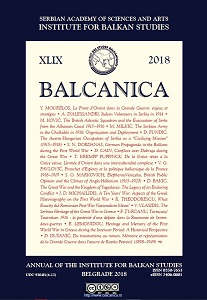What Exactly did Romanian Post-War Nationalism Mean
What Exactly did Romanian Post-War Nationalism Mean
Author(s): Răzvan TheodorescuSubject(s): Nationalism Studies, Interwar Period (1920 - 1939)
Published by: Balkanološki institut - Srpska akademija nauka i umetnosti
Keywords: nationalism; Romania; Transylvania; Nicolae Iorga
Summary/Abstract: In the last century nationalism as a spiritual element – according to the 1919 statement of the historian, archaeologist and philosopher Vasile Pârvan – was a blessed plant grown on Romanian soil during the ’48 revolution, the ’59 union under Prince Cuza, the ’77 war of independence and the preparation of such a national project as the Union with the Romanian Kingdom of several Romanian-speaking provinces dominated by two empires – the Austrian and the Russian – epitomized by Transylvania which came finally to the motherland on the 1st of December 1918, the same day when the Kingdom of Serbs, Croats and Slovenes was born. In the nationalism project, the Union Transylvania was a political priority. But we must add immediately that in the events of 1914–1916 in the neighbourhood of Romania a symbol of the national struggle became what Nicolae Iorga, in a famous lecture of 1915, called “the heroic and martyr Serbia”.
Journal: BALCANICA
- Issue Year: 2018
- Issue No: 49
- Page Range: 183-188
- Page Count: 6
- Language: English

